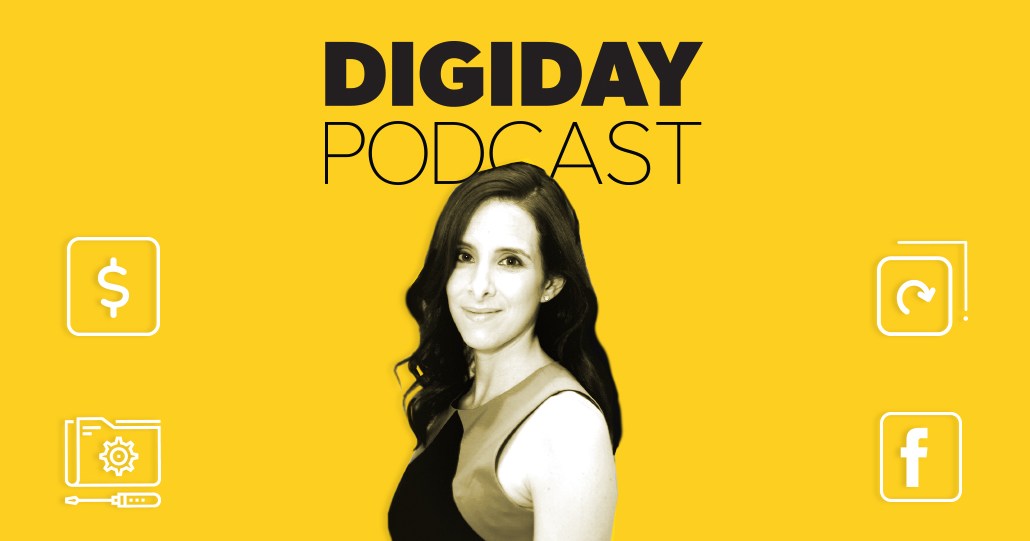The Information’s Jessica Lessin on five years of subscription journalism

When Jessica Lessin founded The Information in 2013 with subscriptions as its only revenue stream, people called the idea absurd. But fast-forward five years, and the model appears to be working. Over 90 percent of The Information’s revenue is now from subscriptions. It just had its most successful Q2 yet, expanded its team to 23 reporters and has pushed its coverage beyond tech.
“The subscription business is a fabulous business,” said Lessin on the Digiday podcast. “We don’t have a sales person. The subscription business sells itself if you create a great product. It’s recurring revenue. It’s zero marginal costs. The lifetime value of our subscribers is way north of a $1,000. We do have a unique audience so we will try some other [revenue streams] to offer as well.”
Subscribe: iTunes | Google Play | Stitcher | Anchor
Lessin discussed lessons learned from five years of running a subscription product, sharing these learnings through an incubator program and more. Edited highlights below:
Follow the tech
“The phrase used to be ‘follow the money.’ The new mantra is ‘follow the tech.’ When we started, we [wanted to be] valuable to the Silicon Valley and the decision makers in the industry. We were focused on stuff that’s valuable to them. As we did that, the finance, industry, retail and automotive industries would turn to us to see how the tech industry is running. We made a bet in covering the automotive industry. We’re about to launch a newsletter on finance. The world of technology is not a niche play.”
Product competes on personalization
“I’m focused on personalization. The cloud world and AWS have a huge audience, but others couldn’t care less. So how do we make sure we hit what they want on a regular basis? The challenge is product as much as editorial. That’s what the subscription business competes on. Churn isn’t an issue for us. More than half our subscribers pay us annually, and the churn is negligible. We focus a lot on subscribers’ experience and getting feedback. That’s where the personalization has been coming in.”
A high bar for product
“It’s a great step. [Subscriptions] are a great way to grow business. The concern I still have is whether products are still catching up. You become a successful subscription business not when you put a paywall up; you become a successful subscription business when you have content that’s worth paying for. Many will be successful who meet that bar. Otherwise it’s something you announce in a press release but won’t be a successful business model.”
Conversions from content
“The stories that convert well are original [pieces] that you can’t get elsewhere across a huge range of subject matter. We also look at overall readership of our stories. Overall audience is 10x our subscriber base. We do let people read our stories in exchange for their emails. We look at how many subscriptions a story drive. I care about the percentage of subscribers that read every story. That number goes down over time with more stories and subscribers.”
Sharing the ins and outs of subscriptions
“Last year, we launched an accelerator program where we invested in five journalists from subscription businesses. We coach them through the year and take a small percentage of their new revenues after joining us. We were seeing a tidal wave in subscriptions. So I wanted to help as I live and breathe it. If we want quality news and information, subscriptions have to be at the heart of it. We’re not going to write every story ourselves. It was a passion project but also could be good from the business perspective as well. We just closed a second year of applications.”
More in Media

Publishers revamp their newsletter offerings to engage audiences amid threat of AI and declining referral traffic
Publishers like Axios, Eater, the Guardian, theSkimm and Snopes are either growing or revamping their newsletter offerings to engage audiences as a wave of generative AI advancements increases the need for original content and referral traffic declines push publishers to find alternative ways to reach readers.

The Guardian US is starting its pursuit of political ad dollars
The Guardian US is entering the race for political ad dollars.

How much is Possible’s future in Michael Kassan’s hands?
Some people in the know at Possible said they see the conference taking a bite out of Cannes’ attendance, most acutely by U.S.-based marketers who could save money by staying on this side of the Atlantic.








